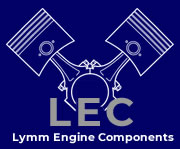Generating oil pressure is a critical function of an automotive engine to ensure proper lubrication and cooling of its components. Let's delve into the technical details of how an engine generates oil pressure:
Components Integral to Oil Pressure Generation:
Oil Pump: The oil pump is responsible for creating oil pressure within the lubrication system. It consists of a rotor assembly, including gears or rotors that draw in oil and compress it to generate pressure.
Oil Filter: The oil filter is an essential component that removes contaminants, debris, and particles from the oil before it reaches the engine components. A clogged or restricted oil filter can impede oil flow and lead to low oil pressure.
Oil Passages and Channels: The engine block and cylinder head contain a network of oil passages and channels that distribute pressurized oil to various components, including bearings, camshafts, lifters, pistons, and valve train.
Oil Pressure Relief Valve: The oil pressure relief valve is designed to maintain the oil pressure within a specified range. It opens when the pressure exceeds a predetermined limit, allowing excess oil to bypass back to the oil pan. This prevents excessive pressure build-up that could damage engine components.
Causes of Low Oil Pressure: Low oil pressure can indicate potential issues within the engine. Here are some common causes:
Insufficient Oil Level: Low oil level is a primary cause of low oil pressure. When the oil level falls below the recommended range, the oil pump may struggle to draw in an adequate amount of oil, leading to reduced pressure.
Worn or Damaged Oil Pump: Over time, the gears, rotors, or other components of the oil pump may wear out or become damaged. This can reduce the pump's ability to create sufficient pressure, resulting in low oil pressure.
Clogged Oil Filter: A clogged oil filter can restrict oil flow, leading to inadequate pressure. Accumulated debris, sludge, or contaminants within the filter hinder the passage of oil, diminishing the pressure generated by the pump.
Oil Viscosity: The viscosity of the oil plays a crucial role in oil pressure generation. If the oil is too thin (low viscosity), it may flow too easily and fail to create adequate pressure. Conversely, if the oil is too thick (high viscosity), it may resist flow, causing low pressure.
Worn Engine Bearings: Engine bearings provide support and reduce friction between moving parts. Over time, these bearings can wear out, resulting in increased clearances. The larger clearances allow oil to leak out, reducing oil pressure.
Leaks or Blockages: Oil leaks or blockages in the oil passages and channels can disrupt the smooth flow of oil, leading to low oil pressure. Common causes include faulty gaskets, seals, or obstructions due to sludge build up.
Malfunctioning Oil Pressure Relief Valve: A malfunctioning pressure relief valve can affect oil pressure regulation. If the valve sticks open or closed, it can result in either excessively low or high oil pressure.
It is crucial to diagnose and address the underlying cause of low oil pressure promptly. Continuously operating an engine with low oil pressure can lead to severe engine damage due to inadequate lubrication. Regular maintenance, including oil changes, filter replacements, and thorough inspections, helps ensure optimal oil pressure and engine performance.
In conclusion, generating sufficient oil pressure is essential for proper lubrication and cooling of an automotive engine. The oil pump, along with other components, works together to create and regulate oil pressure, promoting engine longevity and efficient operation.
